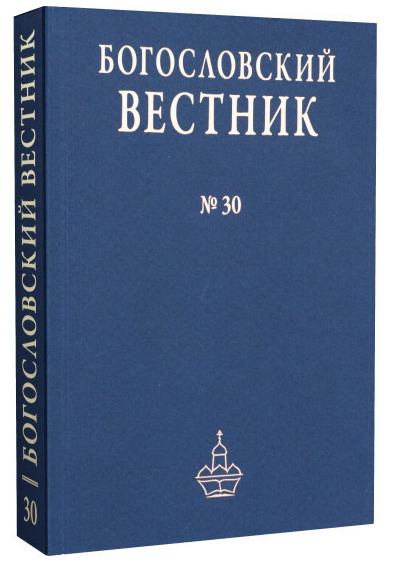The fight between David and Goliath: A historical and theological analysis of 1 Samuel, chapter 17. Part II
DOI:
https://doi.org/10.31802/2500-1450-2018-30-3-15-47Keywords:
historicity of the Bible, biblical theology, Old Testament, Ancient Israel, Ancient Greece, Hittites, Philistines, Egyptians, Assyrians, David, Saul, Goliath, armament of soldiers in the ancient world, Homer, Ancient Greek epic, IliadAbstract
This second part of the present publication analyzes the description of Goliath’s weapons. The author comes to the conclusion that he was a Philistine warrior-charioteer, whose armament is more in line with the historical context of the XIth-Xth centuries BC, and not later. Never- theless, the biblical portrait of Goliath is not an accurate depiction of a warrior of one particular time period, but a mixture of heterogeneous elements both geographical and chronological. According to the A., the biblical writer expressed through the story the theology of Ancient Israel that victory is a gift of the Lord. His narrative was a juxtaposed to the common pagan idea, reflected in the Homeric epos, of the paramount importance of a hero’s physical strength and the power of his weapons, which is why he deliberately used motifs of the ancient Greek epic, which otherwise alien to the biblical style. The biblical writer included a theological message in his text, which was especially relevant in the most critical moments of the Israelites’ history: even if the enemies seem invincible, it is necessary to follow the example of David and, being faithful to the Lord, fully rely on His power. Then that trust will bring salvation not only to the Jews, but the whole world will learn about the power and authority of the God of Israel.
Downloads
References
Андреев Ю. В. Гомеровское общество. Основные тенденции социально-экономического и политического развития Греции XI-VIII вв. до н. э. СПб., 2004.
Ауэрбах Э. Изображение действительности в западноевропейской литературе. М., 1976. Т. 1.
Библейские комментарии отцов Церкви и других авторов I-VIII веков. Ветхий Завет. Тверь, 2009. Т. 4.
Блаватская Т. В. Ахейская Греция во II тысячелетии до н. э. М., 1966.
Выдрин А., свящ. Поединок Давида и Голиафа: Историко-богословский анализ 17 главы Первой Книги Царств. Ч. 1 // БВ. 2018. № 28. Вып. 1. С. 17-42.
Гиндин Л. А., Цымбурский В. Л. Гомер и история Восточного Средиземноморья. М., 1996.
Гомер. Илиада / Пер. с древнегреч. Н. И. Гнедича. Л., 1990 (Литературные памятники 359).
Гусейнов А. А. Античная этика. М., 2004.
Рассказ Синухе // Повесть о Петеисе III. Древнеегипетская проза / Пер. с древнегип., вступ. ст. и комм. М. К. Коростовцева. М., 1978. С. 91-110.
Хрестоматия по истории Древнего Востока: Учебное пособие в 2-х частях / Под ред. М. А. Коростовцева, И. С. Кацнельсона, В. И. Кузищина. М., 1980. Ч. 1.
Лебедева Ю. И. Представления о прекрасном в картине мира древнегреческого аристократа конца IX-VIII в. до н. э. // Ярославский педагогический вестник. 2015. № 6. С. 257-263.
Маккуин Дж. Г. Хетты и их современники в Малой Азии. М., 1983.
Мочалов М. Ю. Древняя Ассирия. М., 2014.
Новый Библейский комментарий в 3 ч. Ч. 1. Ветхий Завет. Книга Бытие - Книга Иова. СПб., 2000 (Энциклопедия христианства).
Нефедкин А. К. Боевые колесницы в древней Греции (XVI-I вв. до н. э.). СПб., 1997 (Автореферат дис. канд. ист. наук).
Геродот. История в девяти книгах / Пер. с древнегреч. и примеч. Г. А. Стратановского. Л., 1972.
Уолтон Дж. Х., Мэтьюз В. Х., Чавалес М. У. Библейский культурно-исторический комментарий. Ч. 1. Ветхий Завет. СПб., 2003.
Феодорит Кирский, блж. Изъяснение трудных мест Божественного Писания. М., 2003.
Цымбурский В. Л. Hetho-Homerica (Наречение Одиссея и наречение злого брата в хеттской Сказке об Аппу и его сыновьях) // Вестник древней истории. 2005. № 2. С. 14-26.
Черненко Е. В. Скифский доспех. К., 1968.
Alter R. The David Story: a translation with commentary of 1 and 2 Samuel. New York, 1999.
Bergen R. 1, 2 Samuel. New American commentary. Nashville, 1996. Bodner 2009 - Bodner K. 1 Samuel: a narrative commentary. Sheffield, 2009.
Brown J. P. Israel and Hellas. B., 1995.
Brown F., Driver S. R, Briggs Ch. A. A Hebrew and English lexicon of the Old Testament. Boston - New York, 1907.
Brueggemann W. First and Second Samuel. Interpretation: a Bible commentary for teaching and preaching. Louisville, 1990.
Oxford Bible atlas / Ed. A. Curtis. Oxford, 2009.
D’Amato R., Salimbeti A. Early Iron Age Greek warrior 1100-700 BC. Oxford, 2016.
De Backer F. Scale-Armour in the Mediterranean Area during the Early Iron age: A) from the IXth to the IIIrd century B. C. // Revue des études militaires anciennes. 2012. Vol. 5. Р. 1-40.
Vaux de R. The Bible and the Ancient Near East. L., 1972.
Dothan T., Dothan M. People of the sea: the search for the Philistines. New York, 1992.
Drews R. The end of the Bronze age: changes in warfare and the catastrophe ca. 1200 B. C. Princeton, 1993.
Fincke А. The Samuel Scroll from Qumran: 4QSam(a) restored and compared to the Septuagint and 4QSam(c). Leiden, 2001.
Finkelstein I. The Philistines in the Bible: a late-monarchic perspective // JSOT. 2002. Vol. 27 (2). Р. 131-167.
Gordon C. H. The common background of Greek and Hebrew civilizations. New York, 1965.
Gordon R. P. 1 and 2 Samuel: a commentary. Grand Rapids (Michigan), 1986.
Hertzberg 1964 - Hertzberg H. W. 1 and 2 Samuel: a commentary. Philadelphia, 1964. Ignance et al. 1984 - The Assyrian Dictionary of the Oriental Institute of the University of Chicago (CAD) / Ed. I. G. Ignance et al. Chicago. 1984. Vol. 15.
Johnson B. J. M. A reading of the David and Goliath narrative in Greek and Hebrew. Durham, 2012 (Diss.).
King P. J. David Defeats Goliath // "Up to the Gates of Ekron": essays on the archaeology and history of the Eastern Mediterranean in honor of Seymour Gitin / Ed. S. W. Crawford, A. Ben-Tor, J. P. Dessel, W. G. Dever, A. Mazar, J. Aviram. Jerusalem, 2007. P. 350-357.
Koehler, Baumgartner 2001 - Koehler L., Baumgartner W. The Hebrew and Aramaic lexicon of the Old Testament 2 v. Leiden, 2001.
Korfmann М. The sling as a weapon // Scientific American. 1973. Vol. 229.4. Р. 34-42.
Matthews V. H. Manners and customs in the Bible. Peabody (MA), 1991. McCarter P. K. I Samuel. Garden City (NY), 1980.
Millard A. The armor of Goliath // Exploring the longue durée: essays in honor of Lawrence E. Stager / Ed. J. D. Schloen. Winona Lake (Indiana), 2009. Р. 337-343.
Miller P. D. The hand of the Lord: a reassessment of the "Ark narrative" of 1 Samuel. Atlanta, 2008.
Petrie W. M. F. Tools and weapons illustrated by the Egyptian collection in University College. L. - Warminster, 1974.
Snodgrass A. M. Early Greek armour and weapons from the end of the Bronze age to 600 B. C. Edinburgh, 1964.
Speiser E. A. On some articles of armour and their names // Journal of the American Oriental Society. Vol. 70. 1950. Р. 47-49.
Stager L. E. Chariot fittings from Philistine Ashkelon // Confronting the past: archaeological and historical essays on Ancient Israel in honor of William G. Dever. Winona Lake (Indiana), 2006. Р. 169-176.
Stoebe H. J. Die Goliathperikope 1 Sam. 17, 1 - 18, 5 und die Textform der Septuaginta // Vetus Testamentum. 1956. Vol. 6. P. 397-413.
Tsumura D. T. The First Book of Samuel. Grand Rapids (MI), 2007. Williams 1998 - Williams P. J. AdyKi // Semantics of Ancient Hebrew database (SAHD). 1998. URL: http://www.sahd.divinity.cam.ac.uk/kidonUNI.pdf (дата обращения 30.07.2018).
Yadin Y. Goliath's Javelin and the םיגרא רונמ // Palestine exploration quarterly. Vol. 86. 1955. P. 58-69.
Yadin Y. The art of warfare in Biblical Lands in light of archaeological study. New York, 1963. Vol. 2.
Yadin A. Goliath's armor and Israelite collective memory // Vetus Testamentum. 2004. Vol. 54 (3). P. 373-395.
Zorn J. R. Reconsidering Goliath: an Iron age I Philistine сhariot warrior // Bulletin of the American schools of oriental research. 2010. № 360. Р. 1-22.








